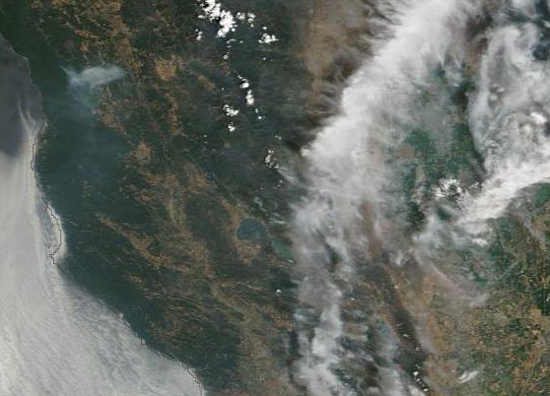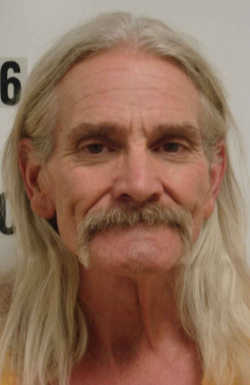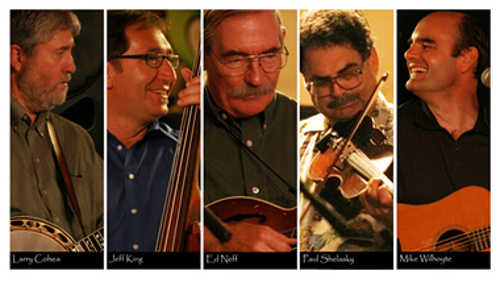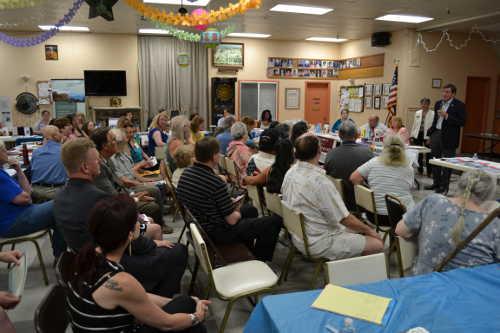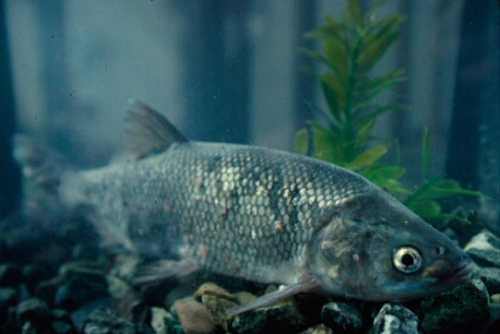
LAKE COUNTY, Calif. – In a hearing that lasted just over 45 minutes Wednesday morning, the state Fish and Game Commission approved the California Department of Fish and Wildlife's recommendation to list the Clear Lake hitch as a threatened species under the California Endangered Species Act.
The five-member commission, meeting in San Diego, unanimously approved the listing proposal. The findings are expected to be brought back at a future commission meeting, which means the listing is not in immediate effect.
The Center for Biological Diversity submitted state and federal listing petitions on the Clear Lake hitch in September 2012. In March 2013, the commission approved listing candidacy for the fish – which put in place immediate protections – and in June formally accepted the Department of Fish and Wildlife's status review on the hitch for consideration.
“This is the first aquatic listed species in the Clear Lake Basin,” Jeff Miller of the Center for Biological Diversity, who wrote the listing petition, told Lake County News following the hearing.
The hitch is a minnow native to Clear Lake. It had at one time been found in Blue Lakes as well, but disappeared sometime in the 1980s or 1990s, according to Kevin Thomas, a senior fisheries biologist who presented the Department of Fish and Wildlife's report at the Wednesday meeting.
Thomas said the hitch had fed on the Clear Lake gnat. The gnats as a food source were reduced after being sprayed with DDT.
The hitch also have been used as a cultural resource for the native Pomo, who dried the fish for food and used it as trade goods, he said.
Thomas explained that the hitch population is “highly fluctuating” due to factors including environmental impacts and stressors.
Clear Lake has more than 20 nonnative species. The largemouth bass prey on hitch, and threadfin shad and Mississippi silversides compete with the hitch for food.
In addition, environmental modifications – such as dams and culverts, and loss of wetlands – have resulted in a 92-percent reduction of the hitch spawning habitat, Thomas said.
“The historic loss is pretty great,” he said.
Clear Lake also is a federally listed water quality site, with cleanup and analysis taking place, Thomas noted.
A climate change report on fish identified the hitch as being extremely susceptible to climate change due to less rainfall and other issues, he said.
Thomas said a good population index of the fish needs to be derived, habitat restoration projects on tributaries need to be assessed, and there needs to be comprehensive monitoring of the fish, as well as coordination of research and development of outreach programs.
The state's status review was sent out to five peer reviewers, including scientists and experts on Clear Lake, Thomas said.
Commissioner Hostler-Carmesin asked if the tribes have been involved in the review process. Thomas said yes. “The tribes have played a very important role in that.”
Commission President Michael Sutton said the Clear Lake hitch is not just a natural resource but a cultural one, with Clear Lake being California's largest natural lake.
“This is an interesting issue,” he said.
Tribal representatives urge commission to approve listing
Carla Rodriguez, a member of the Big Valley Pomo tribal council, spoke to the commission in favor of the listing, following a video presentation from the tribe that looked at hitch numbers and threats to their survival.
“It is a very sacred ceremony for our people, the gathering of these fish,” she said.
Rodriguez said she has seen a drastic decline in the hitch population over her lifetime.
This year, she and her son went out to look at the spawning hitch so she could teach the tribal traditions about the fish to her grandson. Yet, they couldn't find any.
Big Valley, Habematolel and Robinson Rancheria have been working since 2008 on studying the hitch, she said.
Noting that the Pomo have been in Lake County for 11,000 years, Rodriguez said if there is no protection for the hitch, the Pomo way of life will die with it.
Paula Britton, the Habematolel Pomo's environmental director, said she has worked with the hitch since 2008, and because of the concerns about them she's received federal grant funds – even before they've received a listing status.
“We have them in two streams and we have them in Clear Lake,” she said, noting she and her staff – who are out walking the streams every day – only see the fish when it's really wet.
The 2013 spawning run was a bad one. Britton said she and her staff only saw 413 fish, with Britton reporting that one spawning passage area had been decimated by a private property owner.
Britton said that during that spawning period the water was so low that she saw vultures reaching down and snatching and killing the fish. Fish were swimming between her legs and looking for cover.
“If you wait around for all these studies to be done … there aren’t going to be any hitch left,” said Britton, who asked for a full endangered listing, not threatened status.
Sarah Ryan, Big Valley Rancheria's environmental director, said the tribe supports the listing.
The hitch have been impacted by water diversions – both legal and illegal, she said. Thousands of juveniles get stranded and die in the creeks each season due to low water levels.
Ryan said there are incomplete water use reports, an honor system for water users when it comes to reporting, questions about whether the water in county creeks is overappropriated and many environmental violations for illegal diversions being submitted to the District Attorney's Office for prosecution.
She said she has viewed well permits along Kelsey and Adobe creeks, and wells continue to be placed along those hitch-bearing waterways.
Kelseyville resident Peter Windrem, a lifelong resident along Kelsey Creek, also spoke to the commission.
Windrem chairs the Chi Council for the Clear Lake Hitch, founded in 2004, which acts as a hitch information clearinghouse and conducts monitoring of the fish, including collecting data on the spawning runs.
The group's 30 volunteers have spent hundreds of hours gathering information; it's work that Windrem said supplements what the tribes have done to study the hitch.
The council has been able to plot the hitch's status over the last 10 years, and the populations have continued to decline. Windrem said Adobe and Kelsey creeks are now the main spawning tributaries.
“The numbers have dropped drastically and they continue to decline,” said Windrem.
He called the hitch's situation an “urgent matter,” not just for the tribes but the larger Lake County community.
In his turn before the commission, Miller said, “The Clear Lake hitch is the reason we have the California Endangered Species Act.”
The hitch's population has dropped by orders of magnitude, with Miller pointing out that “2013 was the worst hitch run in recorded history, and 2014 wasn't much better.”
He said it will be a challenge to deal with climate, drought and the hitch's interaction with nonnative fishes, but more easy to address will be diversions and obstacles.
Miller suggested that the state work with the Pomo tribes – who he said have led the way in researching the hitch – to comanage the recovery work.
During the commission's discussion of the hitch listing with staff, Fisheries Branch Manager Stafford Lehr said Clear Lake is a huge component of the state's recreational fisheries.
With the many species introduced into the lake, Lehr noted that it's not just one “charismatic recreational fish” that is driving the problems.
He said the tribe’s presentation highlighted that everything in the Clear Lake watershed is out of balance.
“I think there is a collective understanding of what is going on,” Lehr said.
Commissioner Jim Kellogg, who pointed out that he had voted against the commission majority in March 2013 regarding whether the hitch's threatened listing was warranted, said he had grown up spending a lot of time in Lake County, as his parents owned a home in Soda Bay.
He said he had been concerned about the impact of a listing on sport fisherman, particularly black bass fisherman, but added that he put a lot of stake in the studies the tribes and state officials had done.
“It’s disgusting to me that the state of California has allowed that lake to get in the condition it is today,” he said.
For the first time in 20 years, Kellogg visited Lake County this summer to see Clear Lake, adding he was “devastated” to see its condition. He said something needs to happen to fix the problem.
Commission Executive Director Sonke Mastrup read the motion to accept the threatened listing for the hitch and publish the public notice.
Commission Vice President Jack Baylis moved to approve the listing, with Hostler-Carmesin seconding and the rest of the commission joining in for a 5-0 vote.
Miller said after the meeting that he expects the listing may attract state and federal funding to aid in restoration projects.
The Center for Biological Diversity will remain involved with monitoring the progress ahead. Along with the tribes the organization will work to address issues like illegal water diversions and remediating barriers to fish passage, and will try to get a minimum flow prescribed for spawning streams, Miller said.
With the state listing moving forward, Miller said he will be monitoring the federal listing. US Fish and Wildlife still has not taken any action on it, but he added, “The state listing alleviates that concern a little bit.”
Email Elizabeth Larson at This email address is being protected from spambots. You need JavaScript enabled to view it. . Follow her on Twitter, @ERLarson, or Lake County News, @LakeCoNews.

